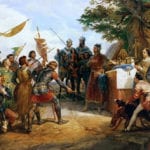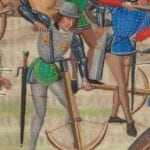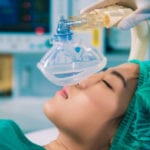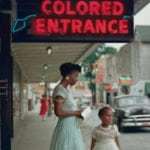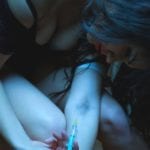 Music
Music  Music
Music  History
History 10 Less Than Jolly Events That Occurred on December 25
 Weird Stuff
Weird Stuff 10 Funny Ways That Researchers Overthink Christmas
 Politics
Politics 10 Political Scandals That Sent Crowds Into the Streets
 Weird Stuff
Weird Stuff Ten Bizarre Facts About The Doge Meme
 Our World
Our World 10 Ways Your Christmas Tree Is More Lit Than You Think
 Movies and TV
Movies and TV The 10 Coolest Stars to Set Sail on The Love Boat
 History
History 10 Things You Didn’t Know About the American National Anthem
 Technology
Technology Top 10 Everyday Tech Buzzwords That Hide a Darker Past
 Humans
Humans 10 Everyday Human Behaviors That Are Actually Survival Instincts
 Music
Music 10 Surprising Origin Stories of Your Favorite Holiday Songs
 History
History 10 Less Than Jolly Events That Occurred on December 25
 Weird Stuff
Weird Stuff 10 Funny Ways That Researchers Overthink Christmas
Who's Behind Listverse?

Jamie Frater
Head Editor
Jamie founded Listverse due to an insatiable desire to share fascinating, obscure, and bizarre facts. He has been a guest speaker on numerous national radio and television stations and is a five time published author.
More About Us Politics
Politics 10 Political Scandals That Sent Crowds Into the Streets
 Weird Stuff
Weird Stuff Ten Bizarre Facts About The Doge Meme
 Our World
Our World 10 Ways Your Christmas Tree Is More Lit Than You Think
 Movies and TV
Movies and TV The 10 Coolest Stars to Set Sail on The Love Boat
 History
History 10 Things You Didn’t Know About the American National Anthem
 Technology
Technology Top 10 Everyday Tech Buzzwords That Hide a Darker Past
 Humans
Humans 10 Everyday Human Behaviors That Are Actually Survival Instincts
10 Blunderful Moments In French Military History
Fans of stereotypes enjoy pointing out that the English word “surrender” comes from the French word surrendre. Of course, those folks conveniently forget that “victory” derives from the French victoire, “battle” comes from the French bataille, and even war itself is from were and guerre. As Kipling said of the French, “Their business is war, and they do their business.”
But while French military history is studded with fantastic feats, it’s also pockmarked with blunders and gaffes. That’s simply the price of doing such regular “business.”
10 Courtrai, 1302

For those not well-versed in medieval duchies and counties, Flanders, now found in modern Belgium, was once a territory of France. At the outset of the 14th century, Flanders was a county divided. The nobles accepted French rule, but the mass of commoners preferred independence—a fact they made clear on May 18, 1302, when they massacred all of the French living in Bruges.
Philip the Fair, King of France, ordered a punitive expedition into Flanders under Robert II of Artois. Robert led what was then one of the greatest French armies ever assembled: over 2,500 heavily armored knights and noblemen, supported by elite infantry numbering at least 4,000.
A lightly armored Flemish militia of 10,000 waited for Robert’s host outside the town of Courtrai. The Flemish peasants carried pikes and goedendags, which were short spears designed to unseat knights. The Flemings chose their ground carefully: A river guarded their backs, and a maze of ditches and marshes protected the Flemish front. While some French knights expressed concerns about attacking such a strong position, Robert dismissed them, declaring, “A hundred horses are worth a thousand men.”
The battle began with both sides exchanging ineffective archery fire. Arrows depleted, the Flemings retreated to their position and braced their pikes against the ground. The French knights told their infantry to step aside and charged the Flemings. The terrain slowed—but didn’t break—the charge. The Flemish pikes, however, stopped the horses short, and the marshy ground turned to mud, ensnaring them. Several more charges met the same result.
Within hours, the French army was destroyed. Over 1,000 knights, including Artois, lay dead. Seeing this, some of the survivors tried to come over to the peasants’ side, but the Flemings killed anyone wearing spurs. As a commemoration of that victory, some 500 pairs of those spurs were collected and hung in Flemish churches.
9 Crecy, 1346

Flemish independence was short-lived. By the 1340s, the English and French were arguing about control over Flanders and the French throne, among other things. Of course, the two countries tended to do their arguing with swords and arrows.
King Edward III of England and his army crossed the English Channel in 1346. They spent the next several months pillaging the French countryside before Philip VI of France caught up with them near the village of Crecy. With Edward were 11,000 troops, of which 7,000 were armed with longbows. Edward positioned his men at the top of a gentle slope, flanked by a river on one side and impenetrable woods on the other.
Philip’s army of between 30,000 and 60,000 men swarmed onto the field in total disorder late in the evening. Ignoring Philip’s orders to wait until the next day, and without any significant reconnaissance, a loosely organized mass of crossbowmen and French heavy cavalry advanced on the English position.
The first crossbow volley fell short, and a rain of English arrows answered. English bowmen could launch five arrows a minute compared with the crossbowmen’s one or two. Decimated, the surviving crossbowmen naturally turned and ran. The French knights did not even wait for their allies to clear the field, entering the charge immediately. Before the French knights could reach the English, though, the English longbows killed their horses and forced the surviving knights back.
The French were nothing if not persistent. They attempted 15 more charges, none of which affected the English position even slightly. The carnage was horrendous. Over 1,500 French knights and 10,000 foot soldiers perished at Crecy at a cost to the English of just 100 dead.
8 Nicopolis, 1396

During the 14th century, the Ottoman army was to the Byzantine army what a hot knife is to butter. To help reclaim some of the Byzantine losses and keep the Ottomans out of Europe, French knights led a crusader army into Northern Bulgaria to the Ottoman fortress of Nicopolis.
The mixed force of French and Hungarians, likely numbering about 20,000, besieged the city. A series of errors doomed the siege. The crusaders had failed to bring any siege engines with them. Not surprisingly, ladders and mining proved ineffective against the city’s massive walls, which meant the crusaders would have to starve the garrison.
While they waited, the crusaders didn’t see the need for scouts to watch the approaches to Nicopolis for an Ottoman relief army. Thanks to this oversight, the Ottoman sultan Bayezid was able to maneuver his men unmolested to just outside of the city, trapping the crusaders between Nicopolis and his army.
The crusaders were led, not by the most experienced among them, but by the highest-ranking noble. This noble was an unseasoned 23-year-old French knight, Jean of Valois. Valois had never fought the Ottomans before. But he was French, and a knight, and so he fully committed his heavy cavalry to a reckless frontal charge into the teeth of an unscouted Ottoman position.
For a moment, Valois’s boldness seemed to work. The French swept Bayezid’s cavalry from the field. But in doing so, Valois and his cavalry entered the range of Ottoman archers, who stopped the French advance cold. The Ottoman army took advantage of the crusaders’ disorder, surrounded the French, and launched a simultaneous attack from Nicopolis on the Hungarian reserves Valois had left behind. Nearly the entire army was captured and killed.
7 Fishguard, 1797

During the French Revolutionary Wars with Britain, the French general Lazare Hoche planned a three-pronged invasion of the UK to disrupt English hegemony. As initially proposed, French forces would land in England and Ireland to support an Irish rebellion and incite general disorder among the English lower classes. Getting to England proved difficult enough for two of the three invasion forces. Both returned to France. The third, after weather forced it from its Bristol-bound course, eventually made landfall at the sleepy port of Fishguard, Wales.
To win hearts and minds on English soil, the French had chosen an Irish-American, William Tate, who had fought against the British during the American Revolution. Tate’s army was a motley assortment of slaves, convicts, and prisoners of war. Still, there were 1,800 of them and they were well-armed. But, as this was Fishguard, there was no one to fight. Tate took a position outside the town and set his men to foraging, but Tate’s brigade instead took the opportunity to gulp down plundered wine. Drunk and disorderly Frenchmen traipsed through Fishguard, and at least a dozen were captured by a single Welsh woman with a pitchfork.
Now vaguely aware they were being invaded, the Welsh called in their militia. Four hundred Welshmen and a similar number of women in their customary redcoats and black hats turned out to defend the town. Faced with what was—to his “army,” at least—an overwhelming force, Tate did the only sensible thing and surrendered.
6 Aboukir Bay, 1798

While Napoleon attempted to conquer and subdue Egypt, the navy that got him there lay anchored in Aboukir Bay east of Alexandria. Though Bonaparte’s Egyptian presence directly threatened England’s control of Mediterranean trade, the French navy that supported Napoleon didn’t expect an English response anytime soon.
Nonetheless, in August 1798, an English fleet under Horatio Nelson soon closed in on the French position. The French would have known this had they posted lookouts along the coast. And the French position wasn’t a strong one. Thirteen French ships of the line were strung out across the bay with large, exploitable gaps between them. Their land batteries couldn’t help because Admiral Brueys had anchored outside of the cannonades’ effective range. Brueys’s crews were also far from their full strength, as many of the French sailors were suffering from an assortment of diseases.
Nelson came upon the French position at twilight and immediately launched his attack. The French were caught so unawares, they’d left oil and paint open on the deck of their flagship.
Nelson’s ships maneuvered through the French navy’s sieve-like line, unleashing torrents of fire upon the hapless French. A shot to the French flagship hit an open pool of oil and set the entire ship aflame; its magazine immediately exploded and crippled the French effort. By the end of the evening, Nelson had captured or sunk 11 of his enemy’s finest ships. English losses? Zero ships and a few hundred casualties.
Napoleon’s army was stranded in the Middle East. Bonaparte and a cadre of generals abandoned their men, slipping aboard a fast transport back to France. The troops had to settle for the holds of British ships.
5 Haiti, 1801–1804

Haiti (or Saint-Domingue, as it was known) began the 19th century in the hands of Toussaint L’Ouverture, a former slave. By 1801, Napoleon had consolidated his power and turned his attentions to the island. It simply wouldn’t do to have a valuable French colony in the hands of a black rebel.
To bring Toussaint to heel, Napoleon sent his brother-in-law General Charles Leclerc and 30,000 French troopers across the Atlantic. From the moment the French landed, the Haitian rebels were content to burn their own towns before the French and fight a guerrilla war from the dense interior jungle. Leclerc was highly capable, and the French quickly captured most of the guerrilla leaders. But though the French could contend with rebels, they fared less well against yellow fever, which afflicted and killed about half of Leclerc’s men. With L’Ouverture still at large, Leclerc made a fateful decision.
Leclerc invited L’Ouverture to a sham peace negotiation, arrested the revolutionary, and exiled him to a prison in the Alps. This desperate miscalculation only further ignited the rebellion, and Leclerc himself succumbed to yellow fever with pacification still unachieved.
Napoleon sent another army to subdue the wayward colony, but shortly after the French reinforcements arrived, war broke out between England and France yet again. France could not afford to continue a costly war in the Caribbean, so the French army and the remaining white planters fled the island. On the first day of the new year 1804, the renamed island, Haiti, declared its independence.
4 Bailen, 1808

In the spring of 1808, Spain was expelling the French occupation force that had recently conquered the country under Napoleon’s direction. To pacify the Spanish uprisings, General Pierre Dupont was dispatched from Madrid to secure the port city of Cadiz. With the addition of some reinforcements along the way, Dupont’s army reached a total strength of 23,000.
About halfway between Madrid and Cadiz, Dupont delayed near the town of Bailen upon learning that the road ahead was firmly under control of Spanish guerrillas. While Dupont debated whether to just hightail it back to Madrid, the Spanish army seized control of the passage there. Dupont feared being cut off from the French headquarters in the capital, so he sent 10,000 men with a General Vedel ahead to retake the passage. In dividing his troops, Dupont allowed himself to be surrounded by the larger Spanish forces and was now cut off from half his army.
Rather than make one great effort to break out of the encirclement, Dupont launched a series of small, ineffectual attacks. The Spanish were unimpressed. Dupont’s advance guard returned, but Vedel made little attempt to break the Spanish encirclement of his countrymen. Vedel considered fleeing, but even that seemed like too much effort, and thus Vedel brought his detachment back to Bailen simply to surrender.
Dupont surrendered his force as well. A total of nearly 18,000 French troops capitulated with a Spanish guarantee that Dupont’s men would be allowed to return to France. The Spanish thought better of repatriation after Dupont surrendered, and they imprisoned the French instead.
3 The Maximilian Affair, 1862–1867

North America during the 1860s was a complete mess. Mexico, like the US, fought a costly (but less conclusive) civil war. A victorious liberal government under Benito Juarez inherited Mexico and its bankrupt treasury. Juarez then stopped paying his European lenders, opening the door for a most unusual invasion.
In 1862, France, Britain, and Spain invaded to force Mexico to pay its debts. When the Anglo-Spanish coalition realized Mexico could not make money magically appear, they abandoned the intervention. The French stayed and took over Mexico City. Napoleon III had designs on a North American empire.
Juarez was “out” and whatever Napoleon III said was “in.” The French emperor installed his new Austrian pal Maximilian Von Hapsburg on the Mexican throne. Mexico’s previously defeated conservative elite welcomed the European prince. Unfortunately, Maximilian enjoyed a conflicted popularity. He and his wife were glamorous, an early version of JFK and Jackie. But Maximilian’s progressive politics, which benefited Indians and the poor at the expense of Mexico’s wealthy conservatives, failed to win Maximilian support on either side.
Throughout Maximilian’s tumultuous reign, French troops policing the countryside provided the only assurance of order. Napoleon III had guaranteed Maximilian these troops under the Treaty of Miramar—a document he had used to convince his “friend” to take the throne. But around this time, Napoleon III lost interest in his Mexico adventure and decided to withdraw the tens of thousands of men.
Without the promised French support, nothing stood between the republican Mexican army and the erstwhile monarch. Maximilian was captured and executed. Benito Juarez regained his position and likely rejoiced that his earlier plan of making Mexico a US protectorate had fallen through.
2 Mars-la-Tour, 1870

France kicked off the Franco-Prussian War by rushing its army to the eastern frontier. After the Prussians mangled that French army a few weeks later, rushing back west to take up defensive positions seemed the only sensible maneuver. To do that, the French would need to pull off an orderly retreat. Unfortunately, the bulk of the French army was in the vacillating hands of Marshal Achille Bazaine, whose command is best summed up in the words of one of his generals: “I spent the entire day in complete ignorance of Marshal Bazaine’s intentions.”
In the midst of their retreat westward, the French collided with elements of the Prussian cavalry, numbering almost 30,000. A formidable force, true, but Bazaine’s strength was still above 120,000 troopers. Yet the dismal odds failed to deter the Prussian cavalry. They attacked, assuming other Prussian forces nearby would hear their gunfire and find the battlefield.
Prussian reinforcements trickled in while Bazaine hesitated. The battle continued with neither side gaining much of an advantage, and the French still outnumbered the Prussians four to one. Bazaine spent most of the battle trying to figure out how to retreat to a better defensive position. A suicidal Prussian cavalry charge of less than 1,000 horsemen helped convince Bazaine he did not want this fight.
Bazaine broke off the engagement, turned away from Paris, and fled toward the nearby fortified town of Metz. General Bazaine and his 115,000 soldiers ended up trapped there, cut off from Paris, and thus cut off from supplies and reinforcements.
1 Sedan, 1870

To relieve Bazaine, who had gotten himself surrounded at Metz by a reinforced Prussian force, Napoleon III sent in the remnants of the French army.
An exhausted French army of 130,000 attempted to regroup at Sedan, a town about 160 kilometers (100 mi) northwest of Metz. While the French waited for their emperor to arrive and assume command, a Prussian army 200,000 strong surrounded the French position. The high ground which surrounded Sedan made the French easy pickings for Prussian artillery.
When Napoleon arrived, the battle was under way, and the Prussian artillery had already devastated the French leadership. Command of the French army was passed around like a hot potato, and disorder was rampant throughout the ranks. Orders were given, then nixed, and then given again. It didn’t take Napoleon long to realize his army wasn’t going to make it through the day, let alone make it to Metz. He ordered a surrender before the slaughter was complete. And after several more disastrous charges, the French leadership cadre acquiesced to their emperor’s wishes.
About 20,000 French soldiers were killed or wounded, and an equal number were taken prisoner during the day’s fight. Another 83,000 French soldiers capitulated afterward, along with Emperor Napoleon, who was himself taken prisoner. Just 44 days old, the Franco-Prussian War should have ended then and there. Instead, with Napoleon vanquished, the Third Republic began its life by rejecting armistice and dragging the war out for several more months.
J. is working on a book (sex, money, intrigue—that sort of thing); if you’re so inclined you can reach him here.
